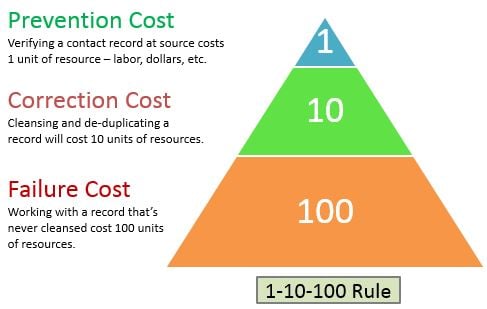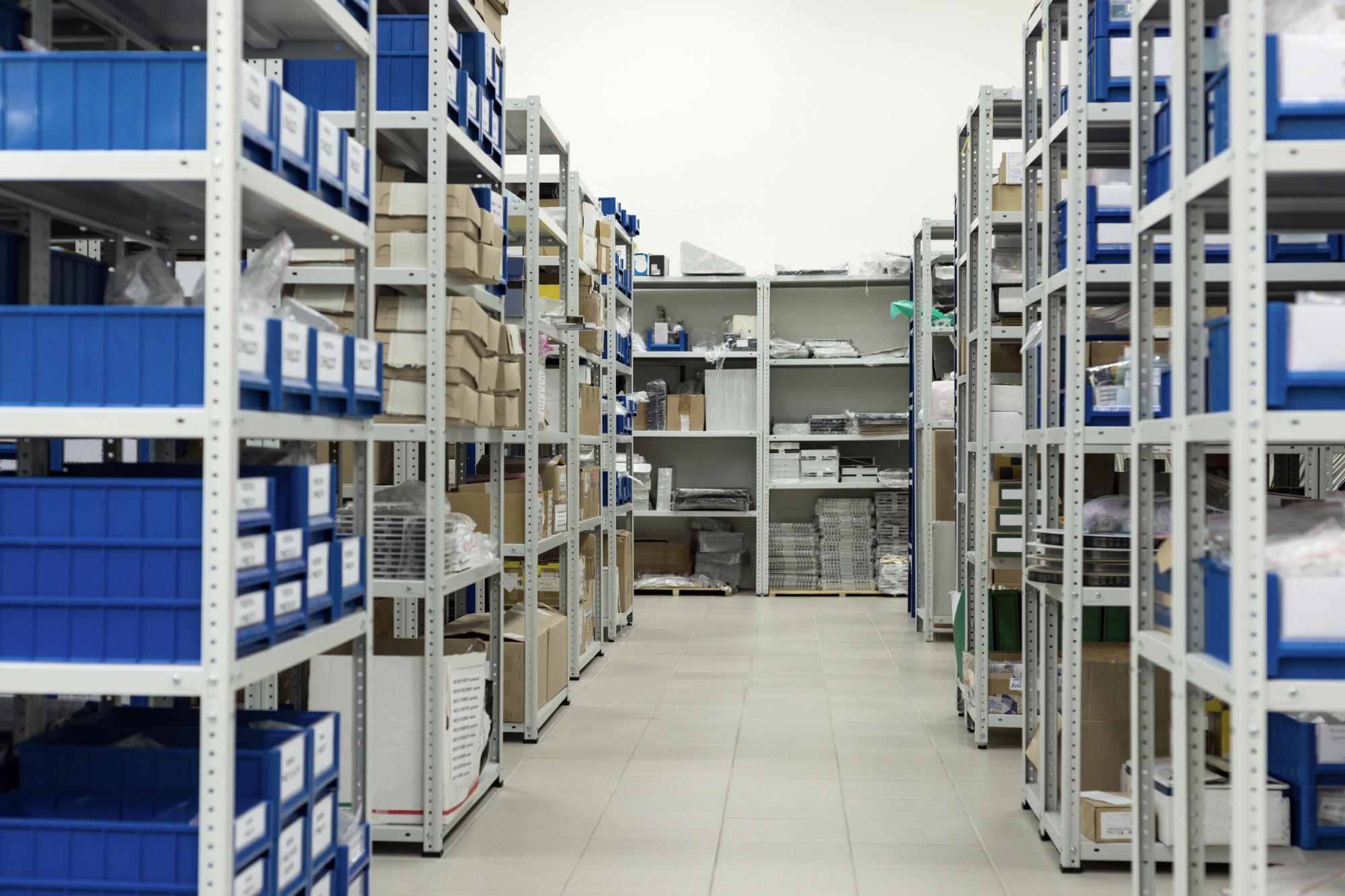
September 5, 2018
Quality issues can arise at any time in the supply chain and production process. Catching quality issues as early as possible in the supply chain are critical because costs of unresolved supplier quality issues can be devastating if they are discovered after a product has been introduced to the market. Therefore, in order for the supply chain to manage quality-related costs and risks, it is crucial to identify quality issues as early as possible.
The 1-10-100 Rule, What Is It?
The 1-10-100 rule refers to the hidden costs of waste associated with poor quality. There are three (3) stages or levels to this rule: the prevention stage, the remediation stage, and the failure stage. The principle suggests that the cost of fixing bad data is an order of magnitude greater that the cost of stopping it from entering the system.
At the prevention stage, the cost of a mistake is very simple, the basic cost of the item for example. For example, when fulfilling an order, a worker realizes an order was incorrectly picked and catches the mistake shortly thereafter, before the item is boxed or left the facility. The cost to replace this mistake is minute, and therefore the cost is minimal, such as the value of the goods or one labor hour, etc.
At the remediation stage, the cost to make a mistake is a direct scaled expense of the original item, ten (10) times greater than the value of the cost of the item or labor hour. For example, let's continue with the wrongly picked item example from above. Say it does leave the facility, on its way to the customer, and then it is discovered that the wrong item was picked. The item has now incurred many more "fees" than it would have being flagged as an incorrect order in the warehouse. At this stage of the order, the cost to fix this mistake costs 1000% more than the base amount of cost of shipping the item to the customer.
But this is not all, if the product gets to the customer and then a mistake is discovered, we have entered the failure stage. Processing returns carries high costs that affect several areas within your organization. Initially, the return of the order will incur fees for the return of the item, order processing and fulfillment, fees for marketing, IT, merchandising, and general administrative costs. Once the item is returned, you will have to pay new shipping costs and back-end costs to store the item. The process of getting this order checked back in and sent back out has now exponentially increased. If the transaction is not an exchange, the entire profit margin is lost along with the processing costs cited above.

Results and Tips for Best Practices
As you can see, the price of a small mistake can be costly. Take the time to check for errors along the way, as this is the right way, smart way, and safe way to fulfill orders.
We must be focused on the prevention stage, and If you are in a hurry, please consider the impact of a tiny mistake versus a huge mistake and the costs incurred by the 1-10-100 Rule. Will the mistake your employees make have severe consequences or not? Will it cause you to lose a customer?
Conversely, how do your managers, balance the time to make everything perfect or going with "good enough"? The impact of a potential mistake is a key consideration in best practice mistake management policies. Good managers always ask the toughest questions to employees as they use their management knowledge and experience to practice high quality mistake management.
In addition to the straight cost factor, best mistake management practices are important for another reason. The high price tag of mishandling returns/incorrect orders also carries the danger of a potential loss of customer loyalty. If your return costs are just too high to handle, you may want to consider outsourcing all or parts of the process.
Let us know what we can do to help!
Tags:

Are you curious about how order fulfillment works? Order fulfillment refers to the process of packaging and delivering products to customers. If you operate an e-commerce company, you likely already...

You have a hot product. Your ads are generating record-breaking clicks. Then you get to the order. $19.50 shipping, 10 days delivery. And the cart is abandoned. Again and again. What if you could...
Resources
Connect